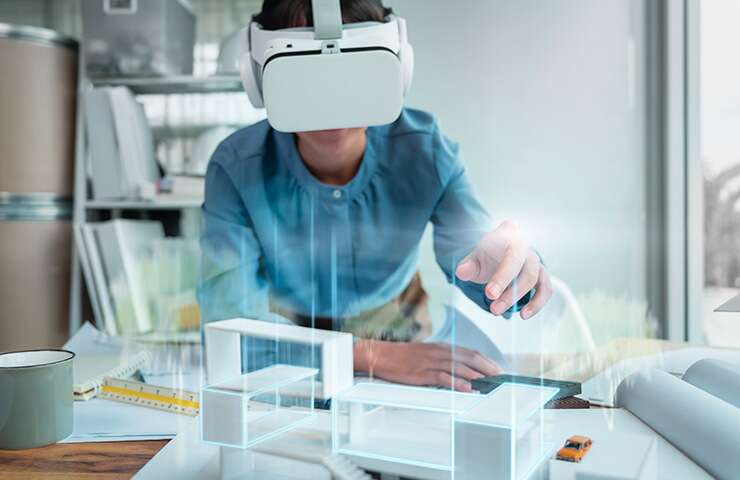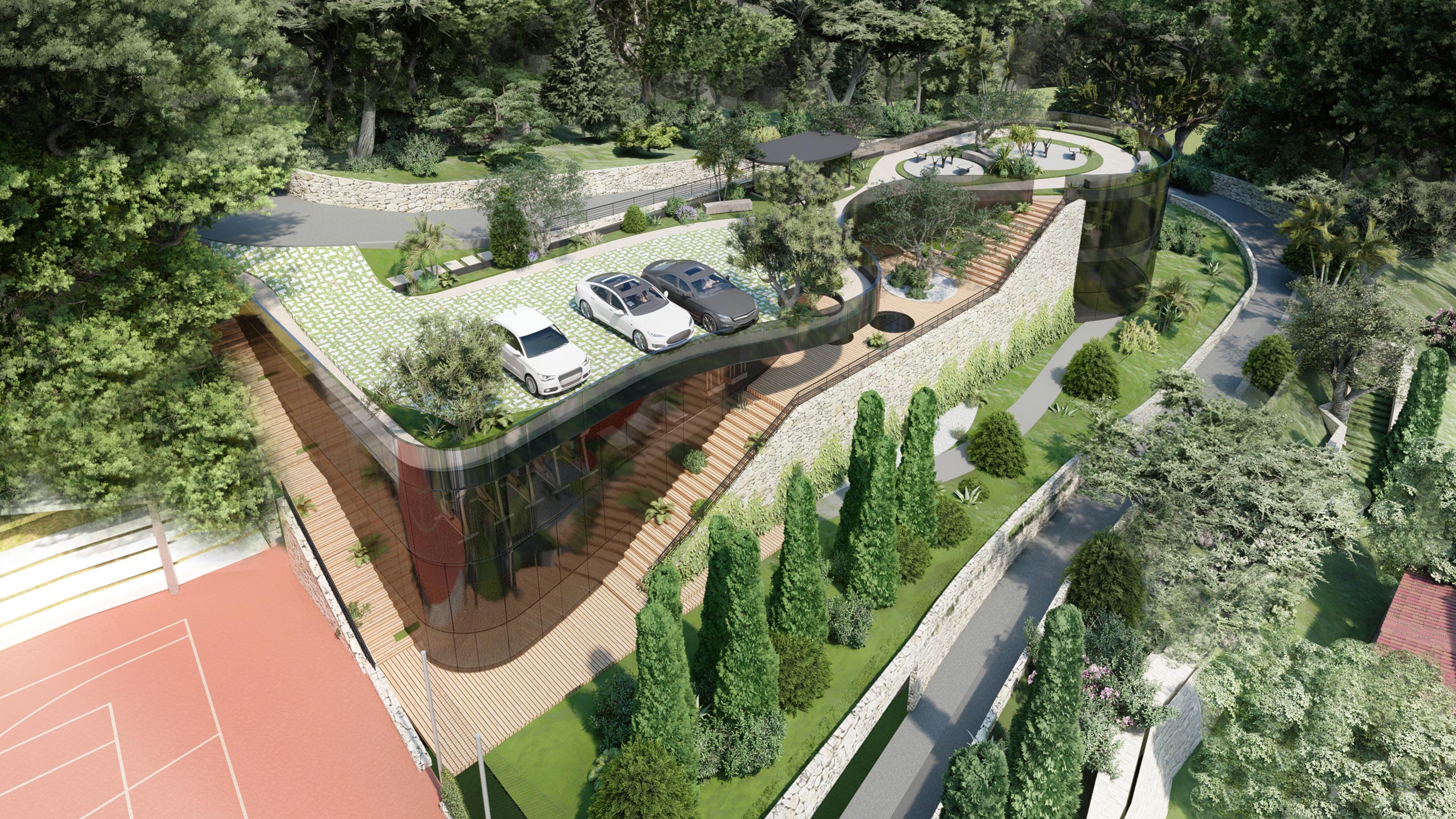
5 min read
The Metaverse is undeniably the hottest buzzword in the tech scene right now and has managed to become an inevitable topic in the world of architecture and design, amongst many other fields. And until a more revolutionary science appears on this scene, we believe the Metaverse will continue to top the tech world’s popularity charts.
In this article, we go over a brief definition of the Metaverse, how it can change the business model for architects and designers, and how these professionals can be major actors in creating a better Metaverse.
First, and to help you get a grasp of what the Metaverse is, we will start by defining it and what it actually does.

What is the Metaverse exactly?
The term Metaverse doesn’t really refer to any one specific type of technology, but rather a shift in the way we interact with technology.
Co-opted from the 1992 sci-fi novel “Snowcrash”, the term Metaverse is often used to describe the natural next phase of the internet that immerses people in a 3D virtual reality world where people can interact and conduct real-world activities. But it wouldn’t be fair to limit the Metaverse to this definition.
It’s also important to note that this new iteration of the internet consists of virtual worlds that continue to exist even when individuals are not in them and offer unprecedented interoperability of data, digital items, assets, and content.
A living experience that exists consistently for everyone and in real-time, the Metaverse is a technology that spans both the digital and physical worlds, acting as an extension of our real lives while offering extraordinary experiences.
When talking about the Metaverse, the technologies companies refer to can include virtual reality as well as augmented reality, which combines aspects of the digital and physical worlds.
These worlds will be populated by content and experiences created and operated by an incredibly wide range of contributors, including architects and designers.
How can architects and designers benefit from the Metaverse?
It’s undeniable that architects’ and designers’ work nature has become harder. In modern society, architects are no longer the master-builder of a project. Nowadays, most architects act as project managers, collaborating with other consultants, engineers, contractors, clients, and government officials to make a project happen. And similar to other professionals that provide services, most architects and designers are paid by hourly rate.
Add to that the struggle to find good clients that fully support their creative designs and not be left with valueless “paper architecture” that is not recognized by anyone.
With the emergence of the Metaverse, architects and designers have the opportunity to reinvent the business model. Instead of providing one-to-one services, they could provide products, services, and solutions that can be reused and can benefit millions of users, not just one client.
For architects and designers, the Metaverse is a blank territory full of possibilities and without the constraints of the physical world.

They can create unique designs and build digital assets like cities, buildings, furniture, sculptures, point clouds, textures, etc., and sell them multiple times to virtual worlds, games, and movies. And while it might be difficult to find clients who value their design from their region, it’s much easier to find users that appreciate their creative ideas across the globe.
“Every designer has amazing designs sleeping in their hard drives. We can revitalize them in the metaverse, where we have more opportunities to share our creativity with the world”, shares Chloe Sun, design technology specialist at global design, architecture, engineering, and planning firm HOK.
This emerging technology will also make it possible to meet with a client inside a proposed or existing building and alter the design in real-time, or even allow firms to host virtual spaces where designers from all over the world can come together to collaborate.
Now that we’ve established the impact of the Metaverse on the fields of architecture and design, which brings us to the following question: how can architects and designers play a role in shaping and enriching the realms of the Metaverse?
The ways architects and designers can improve the metaverse
Virtual reality (VR) and augmented reality (AR), already existing tools and used by architects and designers, are tools that allow clients to immerse in a proposed space, be it a hospital building, a park, or a concert hall. These tools can simulate building performance and play out various scenarios, and create a true digital twin or virtual model that accurately reflects a real building and is updated with real-time data.
Spanning the virtual and physical worlds at once, this advanced technology will allow professionals to constantly optimize their designs and deliver the best results, thus enhancing people’s experiences in real life.
For Brian Jencek, Director of Planning at global design, architecture, engineering, and planning firm HOK, there’s another vision for the Metaverse that goes beyond digital tools, data, and sensors. It focuses on the creation of fantastical immersive environments that can’t be found in reality. “What if we designed a digital-only stadium where you were floating above the field and there were people around you in every direction: up, down, left, right, and everywhere? Do you want to fly to the International Space Station? Or own an NFT of a virtual château on a virtual piece of land in the Swiss Alps? We’ll even include the goats!”, says Jencek in an article discussing how architects and designers can help define the Metaverse, published on HOK’s website.

No matter what the opinions are regarding the evolution of this technology and what it means to architects and designers and the future of the design profession, the Metaverse is coming.
It’s already transforming the design of several building types, such as workplaces, healthcare, education, entertainment, and retail projects.
This inevitable iteration of the internet could dramatically change what the clients need and expect from architecture and design services and products in the next 10 years. That being said, should all architects and designers start considering venturing into this fully functioning economy?

